Home Improvement Living in Texas
How Many Solar Panels Do You Need in Texas?
4 minute readHow to calculate the number of solar panels you need to power your Texas home
Home > BKV Energy Blog > All Posts > 20 Sustainable & Energy-Efficient Landscaping Ideas
How energy-efficient landscaping choices can reduce your electric bills
6 minute read • Last update January 2025

Sustainable landscaping, also known as green landscaping, environmental landscaping, or energy-efficient landscaping, involves creating and maintaining a yard that requires minimal resource inputs like water, pesticides, and chemical fertilizers.
Sustainable landscaping solutions are also notoriously low maintenance, meaning you’ll spend more time relaxing and enjoying your surroundings and less time getting messy and sweaty. Additionally, one of the most significant advantages of a well-implemented sustainable garden is increased home energy efficiency, which can result in lower electricity bills.
Strategic placement of trees, shrubs, fences, and other greenery or installations can provide much-needed shade during summer and block cold winds during winter. These landscaping choices can have a major impact on your electricity bills because they can significantly reduce the energy consumed by your heating and cooling systems, which are responsible for a large percentage of your electricity usage and costs throughout the year.
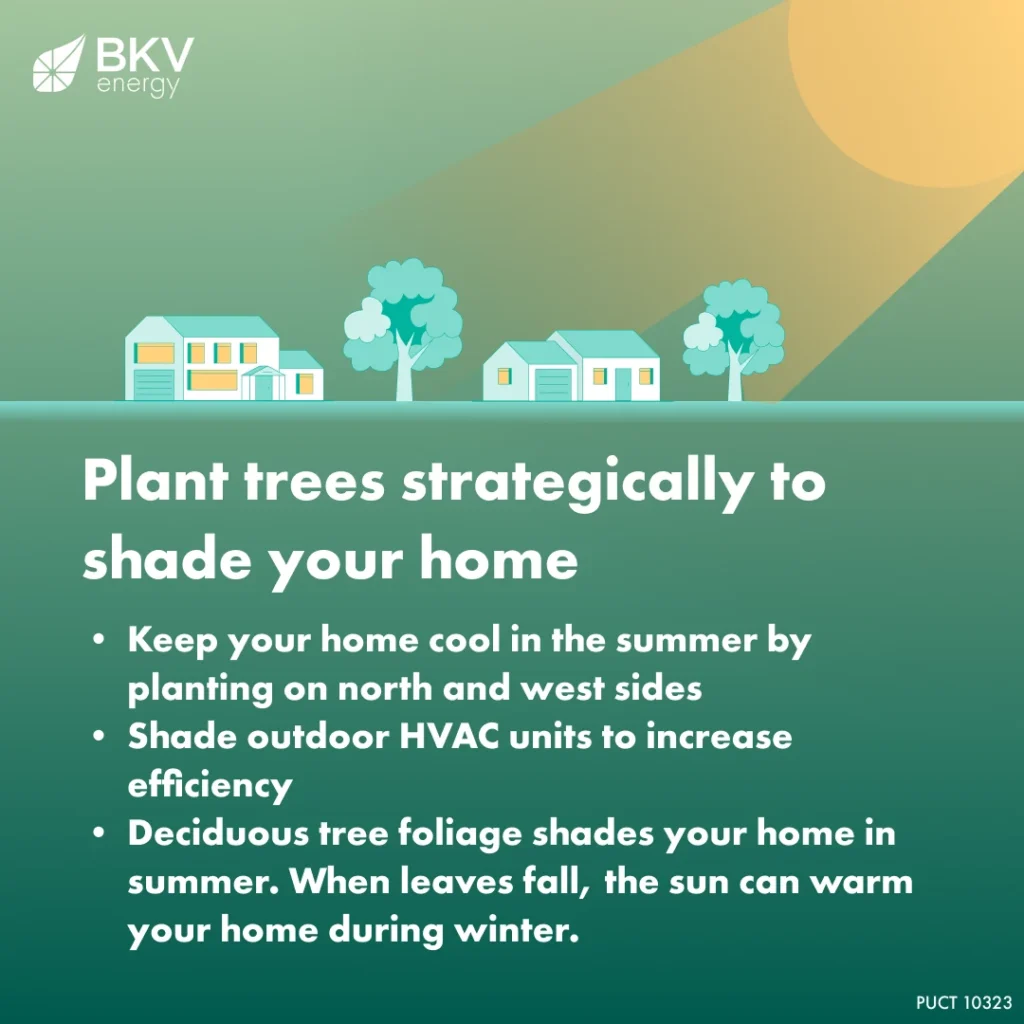
Trees and bushes that shade the home during summer allow your air conditioning to use less energy to keep your home cool when temperatures rise. Trees, bushes, fences, and walls can block chilly winds from decreasing the temperature of your home, which helps your heating system keep you warm for less during the winter.
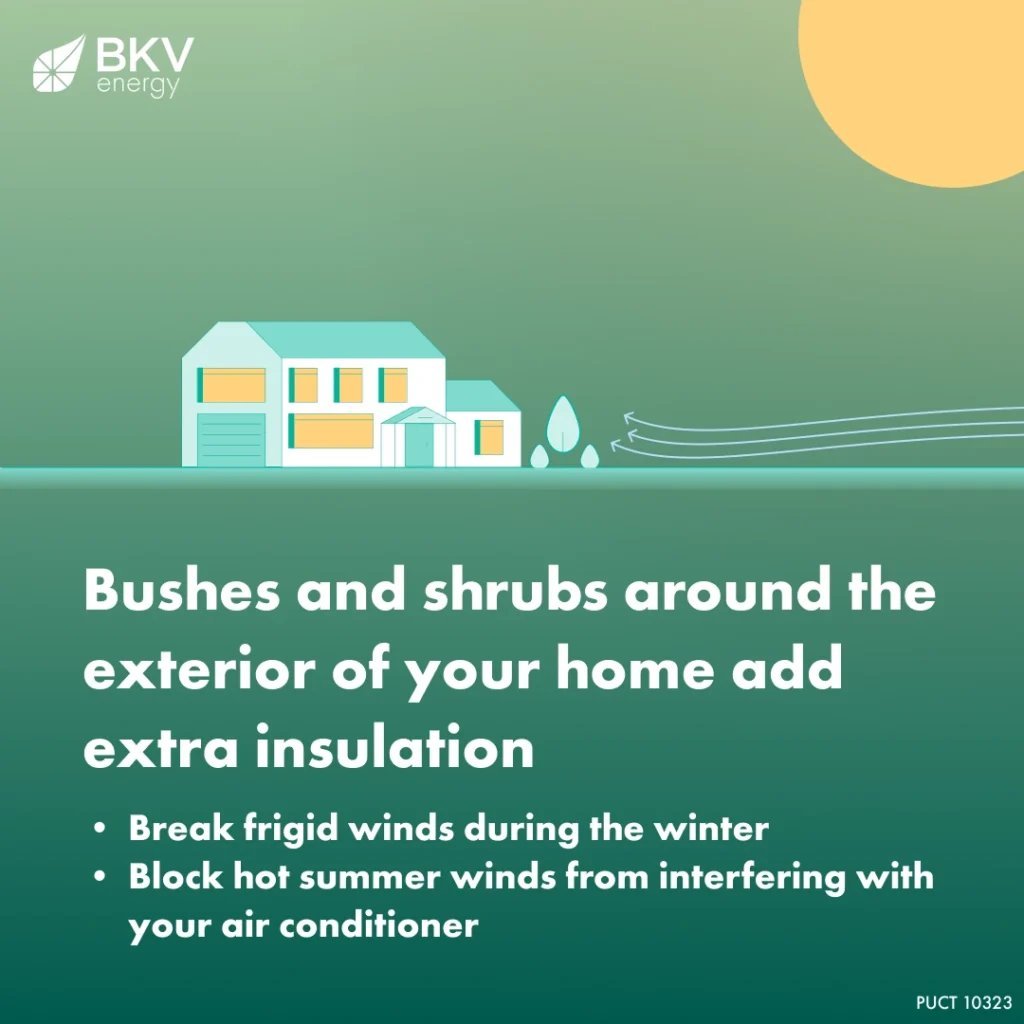
Trees act as natural physical barriers to all kinds of weather, but it’s essential to know exactly where to plant trees around your house.
So, that explains how trees can reduce your electric bill. But what about other plants? Bushes and shrubs placed around the walls of your home add an extra layer of insulation by protecting your property from cold winds. Research shows that sustainable landscaping design can increase energy efficiency by up to 25% while also making your home more aesthetically appealing.
Proper placement of sustainable landscape features helps you harness natural resources like sunlight, reducing the need for artificial lighting. For example:
Solar lighting is more cost-efficient than keeping outdoor lamps and fairy lights burning, potentially saving you up to $146 per year. Maintenance costs are minimal, provided you periodically remove dust, dirt, and debris, and replace the rechargeable batteries every one to two years. Plus, they typically remain functional during blackouts because they don’t rely on the grid for power. Here are a few ways to incorporate solar lighting:
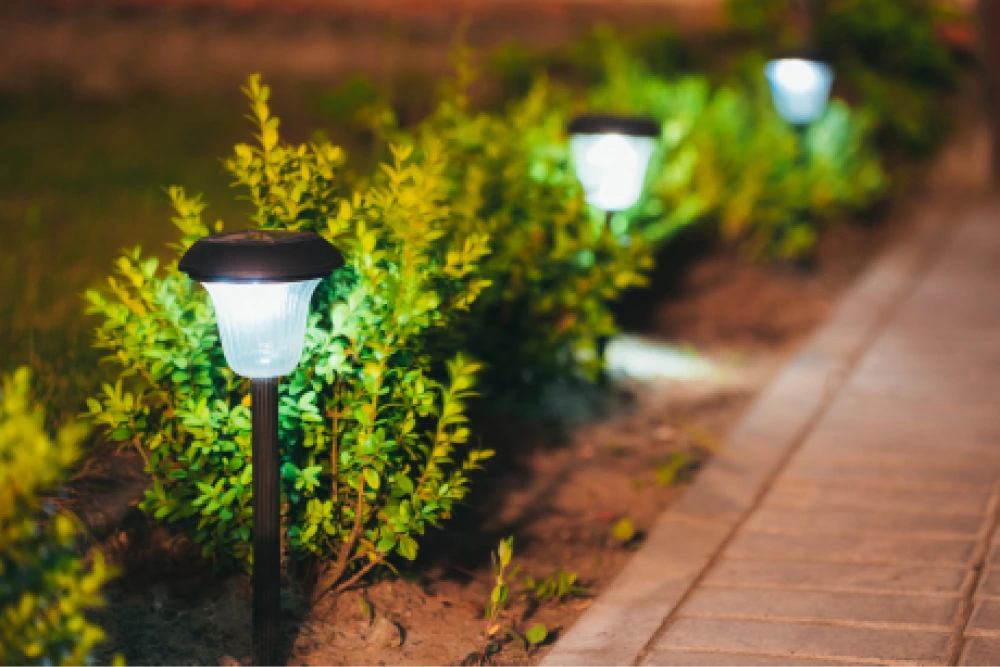
Sustainable landscaping practices play a crucial role in conserving water – especially because many public water systems (PWSs) limit water use during hot Texas summers. Our previous blog includes heaps of practical tips about how to conserve water. However, from a sustainable landscaping perspective specifically, a few best practices include:
Ready to dig down (pun intended!) into some of the best energy-efficient landscaping techniques to create the yard of your dreams? Here’s a list of 15 top sustainable landscaping examples to get you started.
When you choose native plants that have already adapted to thrive in local climate conditions, you’ll need less water to keep them healthy compared to non-native plants. Plus, native plants are typically more resistant to local plant pests, improving the overall health of your ecosystem.
Xeriscaping is a sustainable landscaping practice that involves selecting slow-growing, drought-tolerant plants and lawns that thrive in low water conditions. The result? Lower maintenance, water bills, and yard waste, such as grass clippings and leaves.
In addition to storing rainwater, you could consider landscaping a rain garden. Rain gardens lie below the level of their surroundings, diverting stormwater runoff and rainwater from your roof, driveway, and other hardscapes away from the foundation.
Sub-surface irrigation systems deliver water directly to plant roots, maximizing soil moisture to promote plant health while reducing waste caused by evaporation and runoff. This is a particularly effective green landscaping technique in areas with clay soils.
Permeable pavers can be either porous blocks or nonporous blocks spaced so rainwater runoff can flow between the gaps. By allowing water to seep into the ground, a permeable hardscape promotes groundwater recharge, helping with flooding and erosion control.
Applying a layer of organic matter around plants and tree trunks helps reduce evaporation and maintain healthy soil while also suppressing weeds. Mulch is widely available and typically made from organic materials like sawdust, wood chips, compost, or paper.
Creating a compost bin to recycle solid waste and organic material from your yard and kitchen into a nutrient-rich fertilizer helps reduce waste and minimize your overall environmental impact. Learn more about how to get started in our composting guide for beginners.
Pest-free plant materials like compost and animal manure are rich in valuable nutrients. Using these to fertilize your garden keeps plants healthy and reduces the need for chemical fertilizers—a particularly essential consideration if you have your own vegetable garden.
A green roof, also known as a living roof, is one that is partially or completely covered with vegetation planted over a waterproofing membrane. Green roofs insulate homes, reducing energy costs while also supporting enhanced biodiversity.
Growing edible plants like fruits, vegetables, and herbs allows you to design a functional landscape while also generating organic supplies for your kitchen. Even small food crops can significantly reduce food miles, helping to reduce your family’s environmental impact.
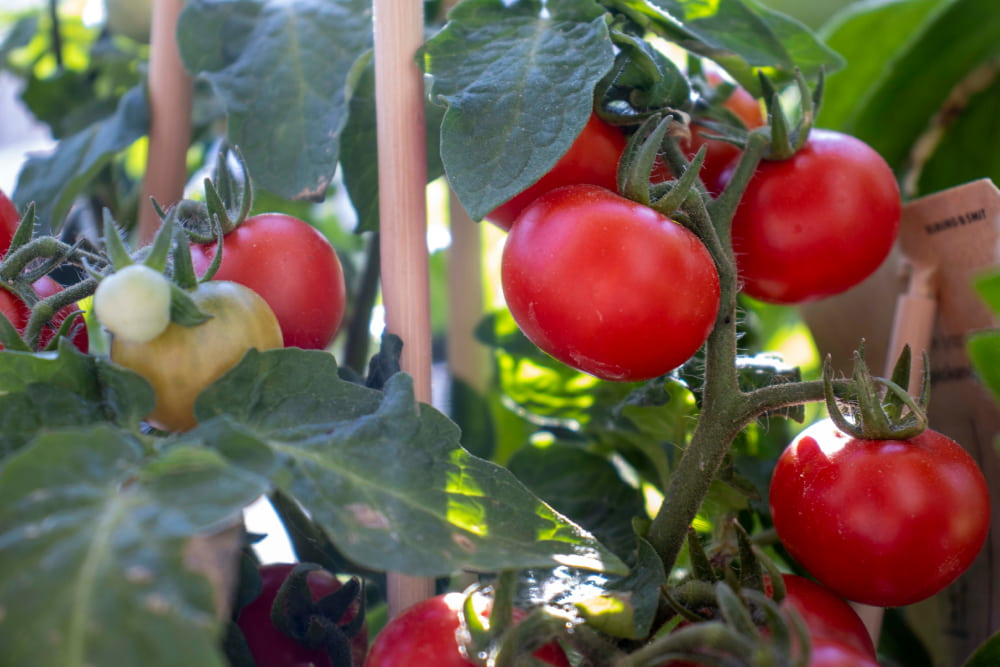
Plant species that attract pollinators like bees and butterflies promote biodiversity, improve plant health, and ensure pollination. Need help choosing the right plant types? Examples that thrive in the local climate include Texas Lantana, Texas Kidneywood, and Texas Bluebonnet.
Replacing some of your lawn area with drought-resistant ground covers like Ajuga, Lilyturf, and Frogfruit will result in less mowing and watering, saving you both time and money while also attracting more beneficial organisms like ladybugs, bees, and ground beetles.
The most energy-efficient landscaping solutions include integrating LED lights, which use significantly less electricity than incandescent bulbs and have a much longer lifespan. You can even install smart lighting systems and motion-sensor lights to further enhance efficiency.
Providing shelter for local wildlife ensures enhanced biodiversity while facilitating integrated pest management. Plants that produce seeds, berries, and nectar are great for attracting birds, bees, and butterflies. You can also install birdhouses, bat boxes, or a small pond.
Sustainable landscapes incorporating recycled materials reduce the carbon footprint associated with manufacturing new products. Reclaimed bricks, stones, and concrete make attractive and durable walkways or patio surfaces, while recycled glass and plastic can be used for decorative edging.
We hope you’re excited to incorporate some of these sustainable practices into your yard. If you’re interested in sustainable landscaping, you’re likely also interested in finding other ways to save resources. One of the best solutions is to switch to a more efficient electricity plan.
At BKVE, we offer affordable, straightforward homeowner electricity plans with no extra fees or marketing gimmicks. Enter your zip code today to see how much you can save and find your new plan.
Graham Lumley, Digital Marketing Manager at BKV Energy, leads digital and traditional marketing strategies, focusing on educating Texans about the state's deregulated energy market. With over 8 years of marketing experience, he creates content to help consumers understand and save on their energy bills, bringing a fresh and dynamic approach to the industry.
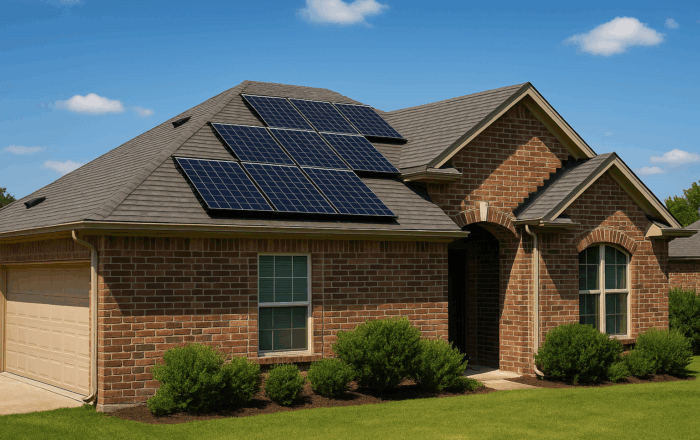
Home Improvement Living in Texas
How to calculate the number of solar panels you need to power your Texas home
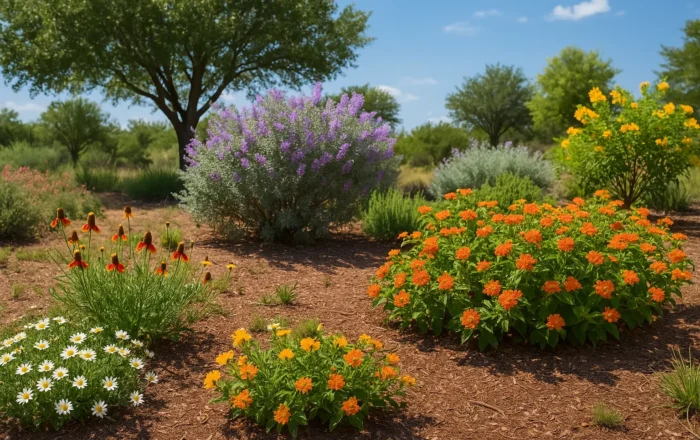
Gardening in Texas presents unique challenges. Long, hot summers and frequent droughts mean that traditional landscaping often requires significant water
Get $50 off your electric bill!
Use code BKVEJOINUS50
Enter your zip code to shop BKV Energy's affordable, fixed-rate Texas electricity plans. Use the promo code for $50 off your electric bill.